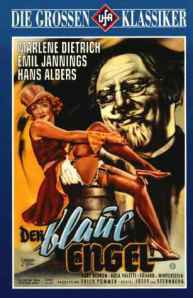 I watched this movie some time ago, and I mean rewatched. It was in preparation for The Dark Knight Rises (Nolan 2012), which I will not comment about on here. There are so many things to love about this film, and yet there are still some things to hate. Let’s get the hate out. Christian Bale’s voice as Batman has got to be one of the most grating voices in cinema, ever. Every time I hear him speak his mumbled, gnarled, overly deep words, I want to punch the screen. Literally, I hate it. Besides that there is not much else to bitch at in this film. The acting on the part of the supporting cast is tremendous. Not to belittle Bale’s performance, but I cannot get enough of Fox (Morgan Freeman), Alfred (Michael Caine), Joker (Heath Ledger, mind blowingly good), and Gordon (Gary Oldman, also fantastic).
I watched this movie some time ago, and I mean rewatched. It was in preparation for The Dark Knight Rises (Nolan 2012), which I will not comment about on here. There are so many things to love about this film, and yet there are still some things to hate. Let’s get the hate out. Christian Bale’s voice as Batman has got to be one of the most grating voices in cinema, ever. Every time I hear him speak his mumbled, gnarled, overly deep words, I want to punch the screen. Literally, I hate it. Besides that there is not much else to bitch at in this film. The acting on the part of the supporting cast is tremendous. Not to belittle Bale’s performance, but I cannot get enough of Fox (Morgan Freeman), Alfred (Michael Caine), Joker (Heath Ledger, mind blowingly good), and Gordon (Gary Oldman, also fantastic).
It is no wonder that Ledger got the Oscar for best actor in a supporting role. It’s not his performance but his submission to the role that really enhances the psychotic mentality that is the Joker, and sadly, probably expedited his demise. Ledger’s ticks, his delivery of the scar stories, even his perfect nonchalance to all the chaos, enhance the role beyond my expectations. I will not say that he is better or worse than Jack Nicholson. I’ll just say Earth One and Earth Two.
Gary Oldman continues to delight me in his performances. I honestly cannot think of a film, in which Oldman was casted, that I did not like him, even if the movie itself was bland. He is just one of those actors, like Freeman and Caine, that I cannot help but love. Oldman has the desire for justice, the want of lawfullness, and the brass balls that make a good Gordon in my book. In fact, two of my favorite moments in the film are his return and promotion to Commissioner. That is a hard thing to say though, considering that there are many amazing moments in this film, “How about a magic trick?”.
What really make this movie fun and fantastic is the blending of the comic book action with the thriller drama. Look at how well the scenes progress during the two boats segment. Batman is using the radar to track Joker while two groups of people contemplate there own death and the fate of the other boat. You have the perfect match of a psychotic thriller mixed with the comic action that is Batman fighting a swat team and the thugs dressed as civilians, while the civilians are disguised as thugs. Classic B-man action.
I know I haven’t mentioned a key component in this film that I feel is crucial, and that is Harvey Dent played by Aaron Eckhart. After seeing Eckhart play the role as Dent and transform into Two-Face, I could not think of a better casting choice. I loved him in it. He quickly became the twisted individual with a sick sense of justice that I have come to know out of a Two-Face character. In this sense I will say I liked Eckhart better than Tommy Lee Jones (sorry).
I have rambled on about the characters and that is because despite the on par editing and the great soundtrack, the whole reason why I love this film is the cast. There are a couple of throw-aways, but they are not worth mentioning. For me, the cast makes this film work, without this unique mix of performers, I am not sure if this film, or series, would have been worth a damn.
Next Post: Fritz Lange – M








